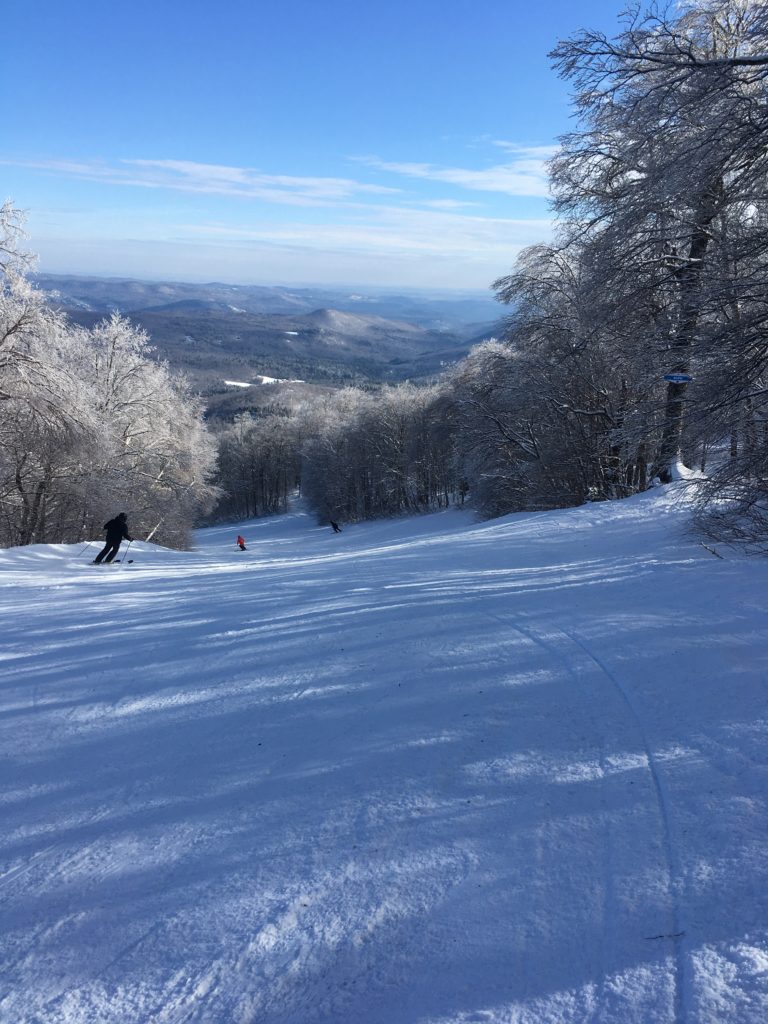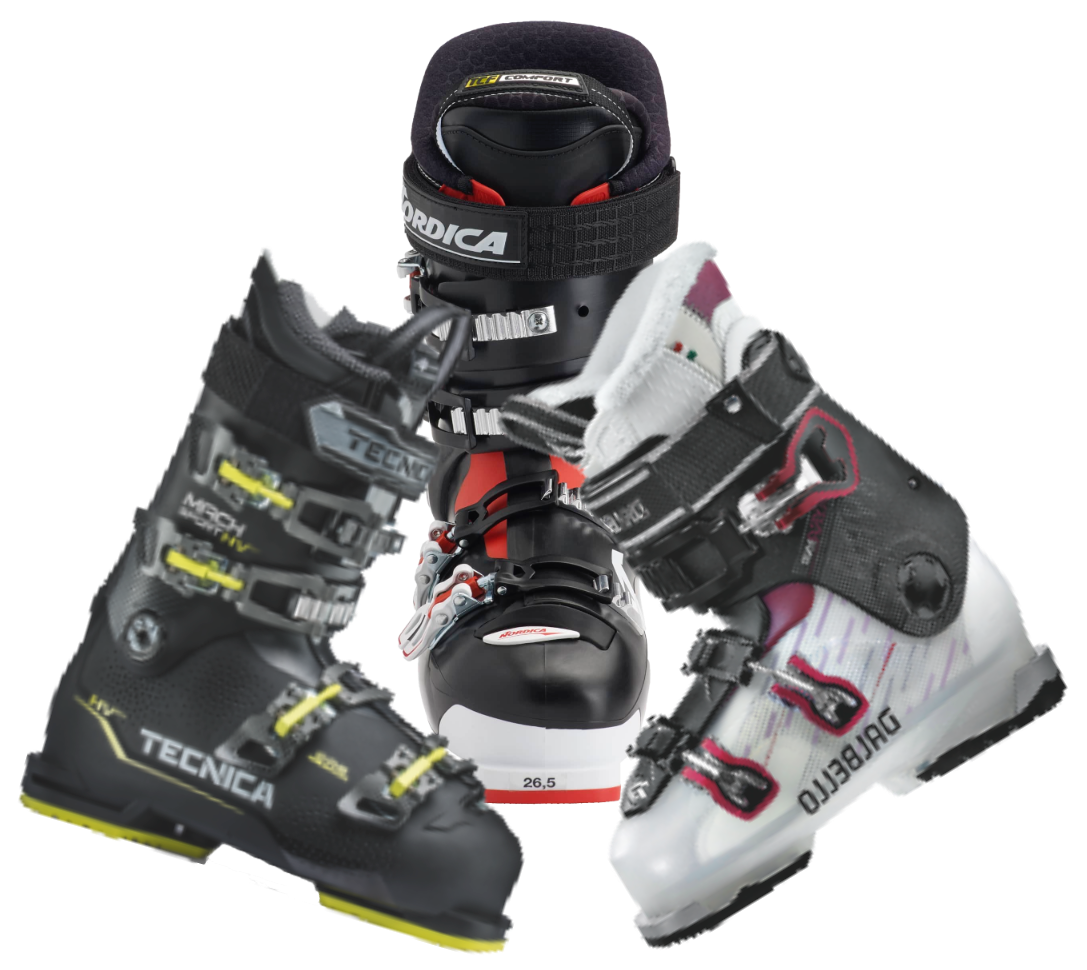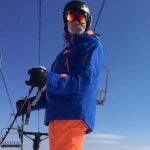One of the benefits of working at a ski shop is that you get to see, touch, and learn about the wide diversity of equipment available to skiers and riders. There is a down side. It is tempting to acquire equipment!
This season I did acquire a few new things. And I thought it would be nice to share my thoughts about those items that I now have had the opportunity to try out. Here are my thoughts on one item.
3-Buckle Cabrio Boots
I am a bit of a sucker for 3-buckle Cabrio ski boots. I have fallen in love with the progressive flex from this style of boot. They also are a snap to get a foot into compared to traditional 4-buckle overlap boots.
For years I skied in Dalbello Krypton 130 boots, and loved them. But, at 98mm width, they were quite narrow. I do have a narrow foot, so they fit, and fit well. But while I can’t say they were comfortable, I also can’t say that they weren’t. They certainly weren’t painful. However, at the end of the day, it was sooooooo nice to get out of those oh so very snug boots.
Roxa Element 120 I.R.

Enter the Roxa Element 120 I.R. ski boot. This is a 99mm last (width) boot. But with adjustment of the toe buckle it can be expanded by a couple of millimeters. While that doesn’t sound like much, to your foot, it is. Enough so that this boot, for me, becomes “comfortable.”
Sure, I could jump up to a 100mm last boot. I tried that. And while I got the “comfort” in the toe box, my narrow foot had too much room everywhere else. That made for a slightly sloppy fit, which I did not like. The adjustable toe box on the Roxa Element 120 I.R. solved that dilemma.
Intuition I.R. Liner
The Roxa Element 120 I.R. boot comes with the incredible Intuition I.R. boot liner. This liner is a “wrap” liner, so called because it wraps around your leg. The wrap provides extra structure making for a stiffer, more responsive boot controlling the ski. The Intuition I.R. liner is also incredibly warm. Yes, warm. In a ski boot.
Finally, the Roxa Element 120 I.R. boot comes equipped with GripWalk. If you haven’t yet heard about GripWalk, you need to pay better attention! GripWalk is becoming the new standard for ski boot soles. GripWalk provides a bit of rocker in the sole, making walking much more natural feeling. And there are rubber grips on the sole instead of just slippery hard plastic. So the boots actually grip while you walk. GripWalk! Bindings not GripWalk compatible? No worries. Element 120 I.R. comes with standard soles you can swap out until you get GripWalk compatible.
Grilamid Poly
Sure, you never heard of Grilamid. Neither did I. Until I hefted an Element 120 boot. I looked at Ben, the Avie’s rep for Roxa and said—”This boot is feather light! What’s missing?” His response—”Good for nothing extra weight.”
Roxa is using some incredible state of the art plastics in making their boots, and Grilamid is one of them. This “super plastic” is incredibly strong and rigid. But unbelievably light in weight. Because of the strength, less is used. Add less plastic used onto the fact it is lighter, and you get a boot that is feather light. Need an extra benefit? Grilamid is NOT affected by cold. So it does not get brittle, despite it being thin and light.
In summary—3 buckles, easy entry, comfortable, warm, super light weight, great for walking. But how do they ski?
On The Slopes
Clicked into a pair of skis, Roxa Element 120 I.R. boots perform spectacularly. The buckle above the bridge of the foot locks the heel snuggly into the heel pocket of the boot. No slipping, no lift. Nestled in the I.R. liner the leg is directly connected to the ski via the boot so great control can be exercised.
What I can say is that the Roxa Element 120 I.R. ski boot is a comfortable, powerful, controlling ski boot. Because the boot is Cabrio-style, the flex is progressive rather than immediate. Personally, I like the progressive power application when I am skiing around the slopes mixing things up between carving and just goofing around. The skis can be driven with as much or as little power as I want in a very controlled fashion. They allow me to ski in a much more relaxed manner than if my feet are inserted into a similarly stiff 4-buckle overlap boot.
Undeserved Bad Reputation
I have heard comments that 3-buckle boots lack power and can’t drive the skis. That is indeed a true statement when applied to 3-buckle—not Cabrio-style—ski boots. 3-buckle boots are often seen in rental boots, where there are simply 3 instead of 4 buckles to make it easier for novices to get feet in an out. But these boots, while having 3-buckles, are NOT Cabrio-style 3-buckle boots. They are 4-buckle overlap boots that are missing a buckle. See “3-Buckle vs. 4-Buckle” for a more detailed comparison.
Because of the very incorrect comparison noted above, a lot of misinformation has been spread about Cabrio-style ski boots. As a result many skiers shy away from some really great ski boots when they see 3-buckles. And that’s really too bad. They are missing an opportunity to find some new magic in how they ski. Indeed, some may not like the progressive nature of a 3-buckle Cabrio boot. It is a different feel. But if you don’t have the open mind to try it, you will never know. I am glad I did.
The difference, by way of an analogy, might be the difference between an incredibly loud alarm to wake you up in an immediate and reactive fashion versus an increasingly louder alarm until the response of wakefulness is achieved. While sometime we need that loud alarm, maybe we don’t want it all the time.
Some Final Thoughts
In closing, Roxa Element 120 I.R. ski boots are great companions for my feet. I can slip into them quite easily and back out again at days end. In between my feet are comfortable. And warm. They provide the progressive power control I prefer when free skiing, and they have the ability to provide plenty of power to drive a ski into a carve without effort.
Those looking for a bit more stiffness should look at the Roxa R3 TI I.R. boot series. Ray Gomes, another Avie’s staff person is skiing those boots. He is a very powerful skier who takes his skis and boots everywhere there is to go on the mountain. He recently was at Waterville Valley skiing on many of the skis we will have in the shop next season. Ray skied everything from big, fat powder skis to skinny slalom skis over 2-days. I asked how his Cabrio boots worked, and specifically how he liked the Roxa R3 TI I.R. boots. His response—”They are incredible! They drove every ski without issue no matter what ski and where I took them. And 3-buckles? Why have one you don’t need? I love the power strap buckle up top. Great feature.”
Is there a downside?
Yes, but a minor one. At days end, once I am back home or wherever I am spending the night, I pull out the liners to let them completely dry. I know most folks do not do this, but I do. When the liners get pulled out, the tongue of the boot tips out and completely over the toe of the boot. That’s kind of nice as then everything is open and getting the liner out, and back in, is a snap. The problem is that the buckles all end up under the tongue as you pull it back up to the front of the boot. If I had at least 3 arms and hands, maybe I could gracefully reassemble the boot. So far I have not been able to do that. It takes less than a minute to move buckles and tongue around and get things all squared away.
But there is a fix. Hook the toe buckle up on the last tooth of the stay but don’t snap it closed. You can get the liner out, and back in, but it takes a bit of force and good alignment of the liner to get it to slip back in. If you don’t regularly remove your boot liners, this is not an issue. You can do this same “trick” when slipping your foot in and out of the boot. It works quite well for feet but is a bit more effort for liners.
While annoying, I don’t find it a game breaker for wanting to take part in all the great assets of clicking Roxa Element 120 I.R. boots into my ski bindings. The comfort, warmth, and performance all quickly make up for that minor distraction.
A final word on the Intuition I.R. liner
Generally, when we fit boots at Avie’s we tell people we can “cook” the liner for a great fit. And then we recommend not doing that unless there is something that doesn’t feel quite right. The Intuition I.R. liner really wants and needs to be heat fit to the wearer before hitting the slopes. In this way best fit is ensured. At Avie’s we can do this right in the shop once you decide these boots are “for you!” This will give a near perfect fit, which will become truly perfect the first time you wear them out on the slopes. The heat you generate in the boot will finish the custom fit process naturally.
Don’t shy away from 3-buckle Cabrio boots. Give them a close look. They have much to offer.





